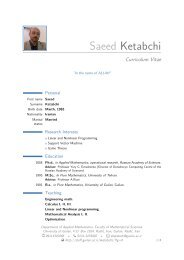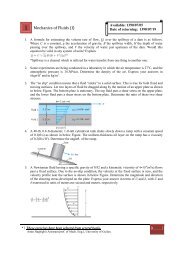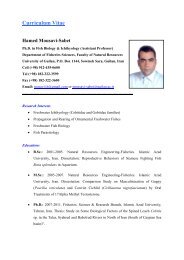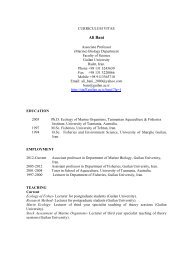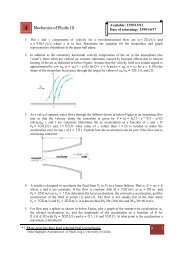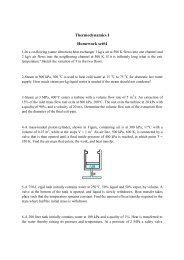Medical Tourism in Developing Countries
Medical Tourism in Developing Countries
Medical Tourism in Developing Countries
- No tags were found...
Create successful ePaper yourself
Turn your PDF publications into a flip-book with our unique Google optimized e-Paper software.
Promot<strong>in</strong>g <strong>Medical</strong> <strong>Tourism</strong> ● 117<strong>in</strong>terface between Cuban <strong>in</strong>formation networks and the global Internet. 84The INFOMED enables Cuba to engage <strong>in</strong> all four modes of <strong>in</strong>ternationaltrade <strong>in</strong> health services as described by GATS.PowerWhile power has yet to reach some 2 billion people across the world, 85 theseare not the <strong>in</strong>dividuals associated with the medical tourism sector. It is alsolikely that these are not people located <strong>in</strong> resort areas s<strong>in</strong>ce modern touristfacilities require power. There are some exceptions, such as remote safaricamps where the lack of power is part of the décor, or a spa treatment wherecandlelight is required for atmosphere. As <strong>in</strong> the case of other <strong>in</strong>frastructure,LDC authorities are faced with the choice of power<strong>in</strong>g resorts versus br<strong>in</strong>g<strong>in</strong>gelectricity <strong>in</strong>to nontourist dest<strong>in</strong>ations. In countries with an activetourist agenda, the opportunity cost of forgo<strong>in</strong>g the tourist region is enormous.As a result, <strong>in</strong> a tourist-friendly country such as South Africa, only11 percent of rural households have access to electricity (even though 70percent of the population resides there 86 ).Electrified regions of LDCs, whether they are tourist spots or capitalcities or remote farms, suffer from unreliable power supply that restrictsproduction. Blackouts and brownouts <strong>in</strong> power systems disrupt economicand private life. However, the large hospitals that promote medical tourismare shielded from such unreliability by their <strong>in</strong>dependent generators andpower supplies. Among the countries under study, only India and thePhilipp<strong>in</strong>es are below the LDC average of electricity consumption (569 and610 kilowatt hours per capita respectively, compared to 1,155). 87TransportTransportation systems are crucial for economic development <strong>in</strong>sofar as theyenable the movement of goods, services, and resources, and thereby enablecommercial relations to thrive. A developed, ma<strong>in</strong>ta<strong>in</strong>ed, and function<strong>in</strong>gtransportation system is likely to stimulate the flow of populations, not just<strong>in</strong>ternational patients/tourists, but also migrants who respond to chang<strong>in</strong>gmanpower demands of the medical tourism <strong>in</strong>dustry. 88 In contrast, a deteriorat<strong>in</strong>g<strong>in</strong>frastructure consist<strong>in</strong>g of traffic congestion, lapsed ma<strong>in</strong>tenance ofroads and ports, and an outdated urban transport strategy restra<strong>in</strong>s the flowof <strong>in</strong>ternational patients and dampens their demand for medical tourism.With respect to the extent and ma<strong>in</strong>tenance of roads (table 5.4), aga<strong>in</strong>India and the Philipp<strong>in</strong>es have the least developed road system whileMalaysia and Jordan have the most developed. When it comes to another






